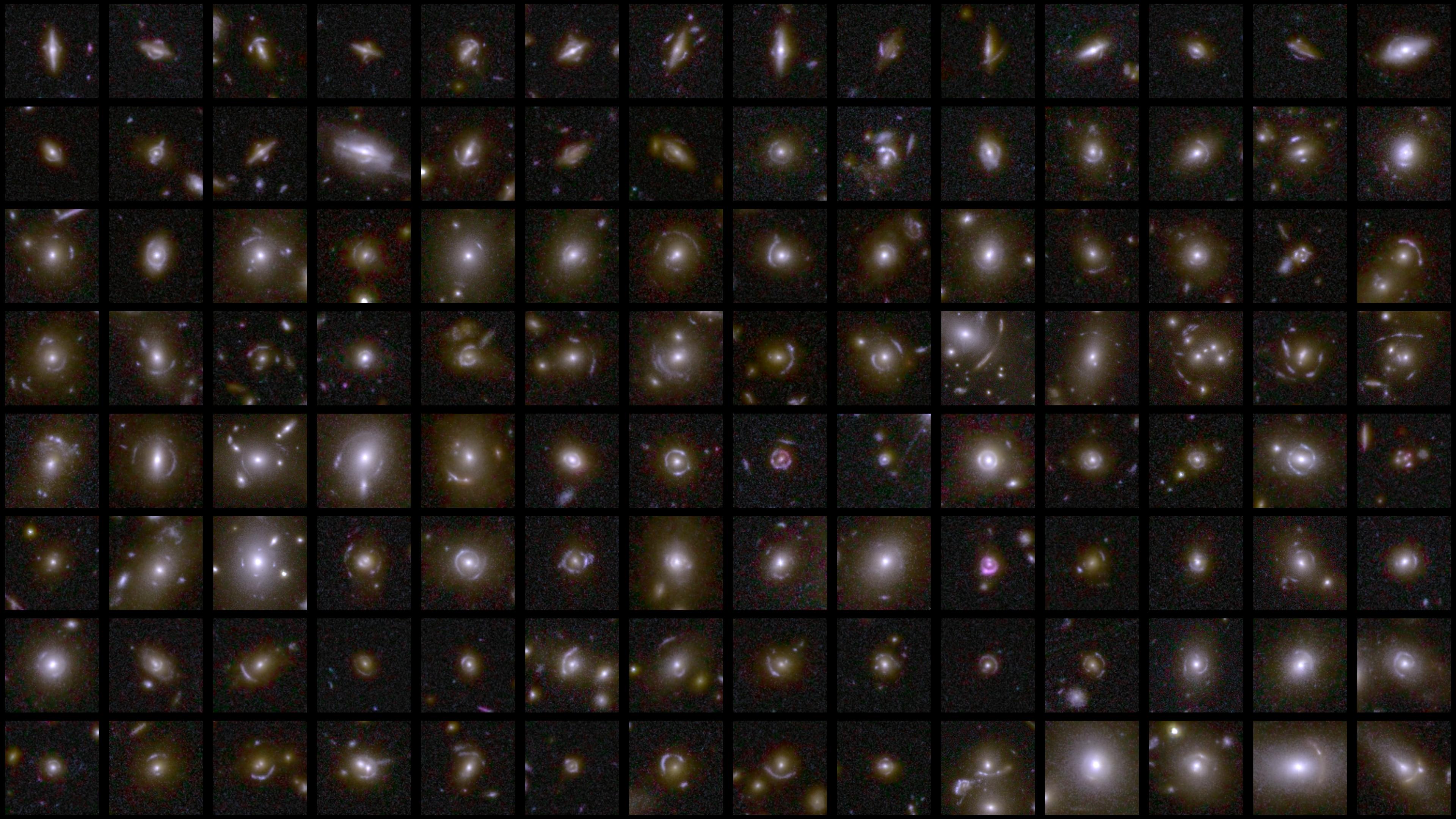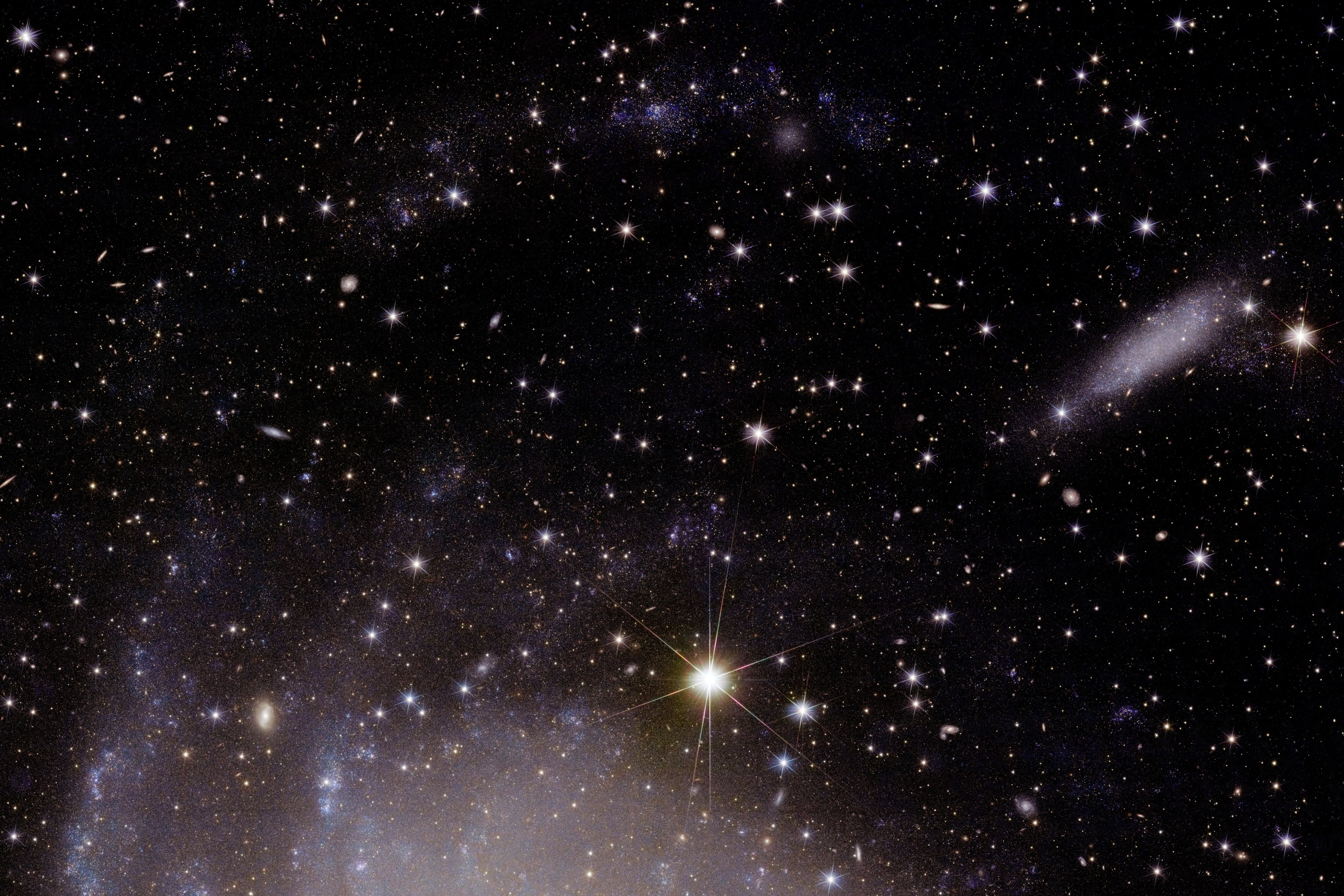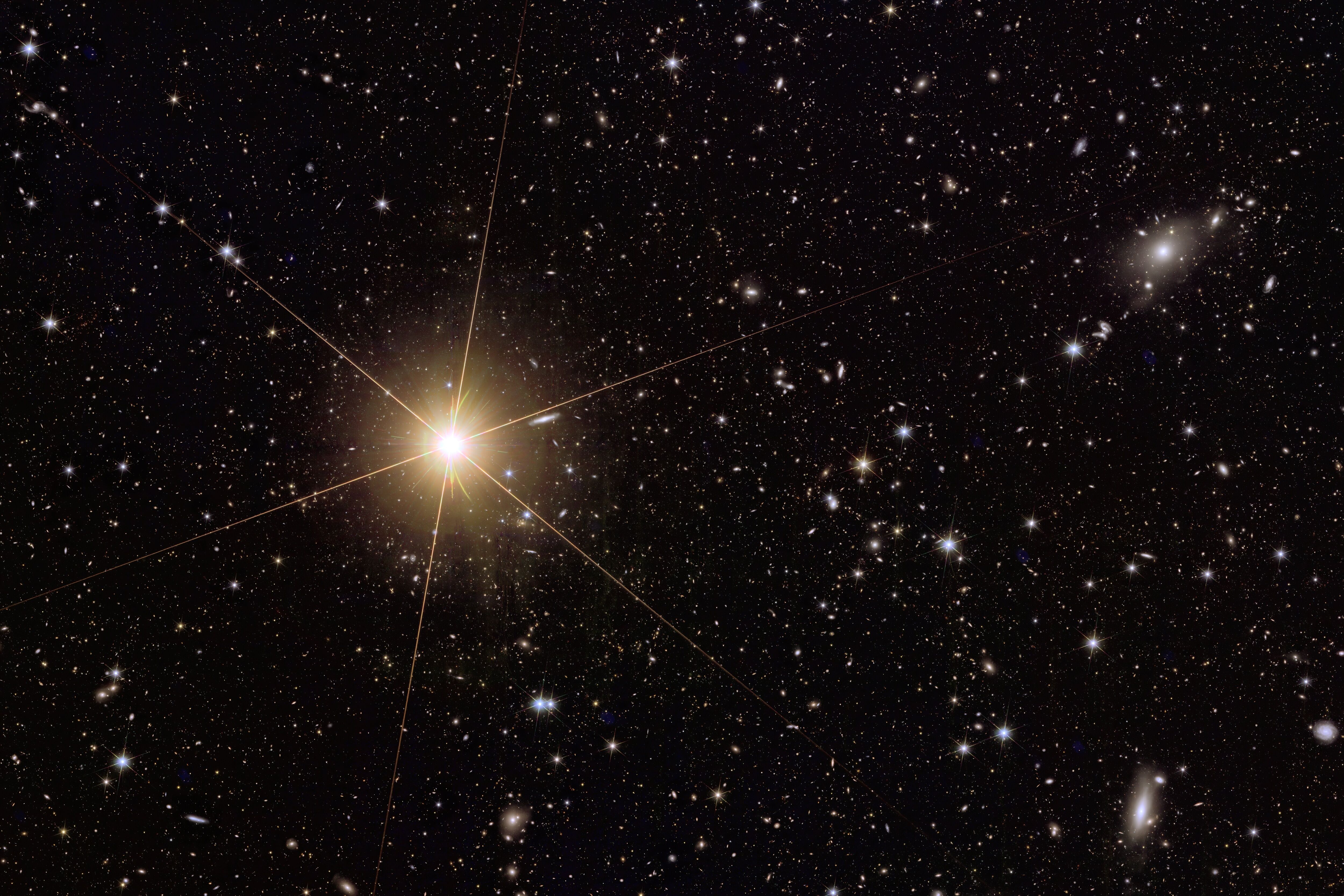Euclid
Euclid’s view of the Horsehead Nebula - Zoom 2
Please sign in to download.
Euclid shows us a spectacularly panoramic and detailed view of the Horsehead Nebula, also known as Barnard 33 and part of the constellation Orion. At approximately 1375 light-years away, the Horsehead – visible as a dark cloud shaped like a horse’s head – is the closest giant star-forming region to Earth. It sits just to the south of star Alnitak, the easternmost of Orion’s famous three-star belt, and is part of the vast Orion molecular cloud. Many other telescopes have taken images of the Horsehead Nebula, but none of them are able to create such a sharp and wide view as Euclid can with just one observation. Euclid captured this image of the Horsehead in about one hour, which showcases the mission's ability to very quickly image an unprecedented area of the sky in high detail. In Euclid’s new observation of this stellar nursery, scientists hope to find many dim and previously unseen Jupiter-mass planets in their celestial infancy, as well as young brown dwarfs and baby stars. “We are particularly interested in this region, because star formation is taking place in very special conditions,” explains Eduardo Martin Guerrero de Escalante of the Instituto de Astrofisica de Canarias in Tenerife and a legacy scientist for Euclid. These special conditions are caused by radiation coming from the very bright star Sigma Orionis, which is located above the Horsehead, just outside Euclid’s field-of-view (the star is so bright that the telescope would see nothing else if it pointed directly towards it). Ultraviolet radiation from Sigma Orionis causes the clouds behind the Horsehead to glow, while the thick clouds of the Horsehead itself block light from directly behind it; this makes the head look dark. The nebula itself is made up largely of cold molecular hydrogen, which gives off very little heat and no light. Astronomers study the differences in the conditions for star formation between the dark and bright clouds. The star Sigma Orionis itself belongs to a group of more than a hundred stars, called an open cluster. However, astronomers don’t have the full picture of all the stars belonging to the cluster. “Gaia has revealed many new members, but we already see new candidate stars, brown dwarfs and planetary-mass objects in this Euclid image, so we hope that Euclid will give us a more complete picture,” adds Eduardo. [INSERT TECHNICAL DETAILS OF IMAGE] The data in this image were taken in about one hour of observation. This colour image was obtained by combining VIS data and NISP photometry in Y and H bands; its size is 8800 x 8800 pixels. VIS and NISP enable observing astronomical sources in four different wavelength ranges. Aesthetics choices led to the selection of three out of these four bands to be cast onto the traditional Red-Green-Blue colour channels used to represent images on our digital screens (RGB). The blue, green, red channels capture the Universe seen by Euclid around the wavelength 0.7, 1.1, and 1.7 micron respectively. This gives Euclid a distinctive colour palette: hot stars have a white-blue hue, excited hydrogen gas appears in the blue channel, and regions rich in dust and molecular gas have a clear red hue. Distant redshifted background galaxies appear very red. In the image, the stars have six prominent spikes due to how light interacts with the optical system of the telescope in the process of diffraction. Another signature of Euclid special optics is the presence of a few, very faint and small round regions of a fuzzy blue colour. These are normal artefacts of complex optical systems, so-called ‘optical ghost’; easily identifiable during data analysis, they do not cause any problem for the science goals. The cutout from the full view of the Horsehead Nebula is at the high resolution of the VIS instrument. This is nine times better than the definition of NISP that was selected for the full view; this was done for the practical reason of limiting the format of the full image to a manageable size for downloading. The cutout fully showcases the power of Euclid in obtaining extremely sharp images over a large region of the sky in one single pointing. Although this image represents only a small part of the entire colour view, the same quality as shown here is available over the full field. The full view of the Horsehead Nebula at the highest definition can be explored on ESASky. [Image description] This square astronomical image is divided horizontally by a waving line between a white-orange cloudscape forming a nebula along the bottom portion and a comparatively blue-purple-pink upper portion. From the nebula in the bottom half of the image, an orange cloud shaped like a horsehead sticks out. In the bottom left of the image, a white round glow is visible. The clouds from the bottom half of the image shine purple/blue light into the upper half. The top of the image shows the black expanse of space. Speckled across both portions is a starfield, showing stars of varying sizes and colours. Blue stars are younger and red stars are older. IMAGE CREDIT: ESA/Euclid/Euclid Consortium/NASA, image processing by J.-C. Cuillandre (CEA Paris-Saclay), G. Anselmi; CC BY-SA 3.0 IGO
















